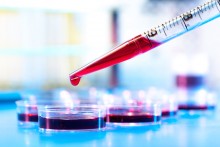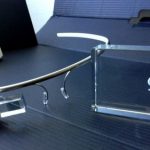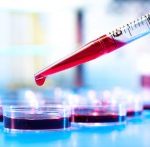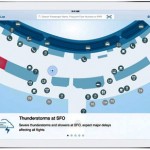In First Distribution Deal, StemBioSys Teams with Funakoshi in Japan

San Antonio — StemBioSys has signed a three-year marketing and distribution deal with Funakoshi Co. Ltd to bring its stem cell production products to Japan, the San Antonio startup’s first distribution deal.
Funakoshi, which is based in Tokyo, distributes both advanced and basic life science research instruments throughout the country. The deal will allow Funakoshi to market, sell, and distribute in Japan StemBioSys’ core product, a matrix that helps produce stem cells, and any new products it develops, says StemBioSys CEO Bob Hutchens.
“If you look at the world of stem cells and regenerative medicine, Japan is probably the furthest ahead in the world,” Hutchens says. “It was a market we were very interested in. It’s very hard to be there without a Japanese partner.”
Japan has indeed found interest in stem cell research, such as with Fujifilm’s $ 307 million acquisition of Madison, WI-based Cellular Dynamics, which has commercialized its own stem-cell-production technology. Other producers exist, too, including San Diego-based Stemedica and Cynata Therapeutics, an Australian-based company using technology developed at University of Wisconsin-Madison.
StemBioSys develops an extracellular matrix from bone marrow stem cells. The matrix is made of natural proteins that are created by stem cells to act like a home, helping the cells divide, expand, and replicate into more stem cells. The company sells them as a product to researchers and companies for everything from pharmaceutical to clinical use. In the matrix, mesenchymal stem cells from body fat, bone marrow, umbilical cords, and others, can multiply faster than cells in traditional culture plastic while still remaining small and undifferentiated, the company says.
StemBioSys plans to add more distribution deals in “key markets around the world” rather than develop a sales and marketing force on its own, Hutchens says. The company currently does not have a distribution deal in the U.S. and is selling directly to customers, he says.
“The strategy we’re driving is to have key distribution agreements in all the major markets where there is significant stem cell research being done,” Hutchens says.
StemBioSys is also adding more products to its portfolio, and anything it adds will be included in the distribution deal with Funakoshi. StemBioSys contends that the natural production environment of its product, which is currently sold in plastic dishes, makes it more effective than synthetic matrixes or other procedures meant to grow stem cells.
When StemBioSis uses stem cells to create a matrix—the home that they naturally build so they can divide into new cells—in something like a plastic lab dish, the company has a process of extracting the stem cells and leaving the matrix intact in the dish. That remaining matrix in the dish is the company’s core product, called a high performance microenvironment or HPME. If placed in the intact matrix, other stem cells can divide and create new stem cells—without having to create a matrix of their own.
The company has filed a patent application for a version of its extracellular matrix that doesn’t need to be confined to the dish it was created in—a free protein version, Hutchens says. StemBioSys has figured out a way to extract the fragile cellular matrix from the plastic dish, so that the matrix can potentially be added to other cell reproduction tools—such as a synthetic matrix, a gel, or a specialty compound—and could potentially enhance them, Hutchins says.
“If you think about tissue repair in the human body, we’ve seen evidence that if you take the matrix and you combine it with something else that’s used for that, then you’ve got some interesting results for what the combined product has done,” Hutchens says.
In April 2015, StemBioSys announced it had raised an $ 8 million Series A round from San Antonio venture firm Targeted Technology and some 50 angel investors. The company also has some prominent names on its board of directors, including Chairman Catherine Burzik, the former CEO of Kinetic Concepts and an operating partner at Targeted Tech, and Robert Langer, the prolific researcher and entrepreneur at the Massachusetts Institute of Technology.
StemBioSys also has collaborated with other local researchers, such as nonprofit BioBridge Global, which provides products and services from blood resource management to collecting donated umbilical cords. In December, StemBioSys and BioBridge announced they would use the matrix technology to produce more stem cells from umbilical cord blood.
(19)











